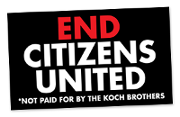Biblio
Filters: First Letter Of Last Name is M [Clear All Filters]
(2001). Driving Digital: Microsoft and Its Customers Speak About Thriving in the E-Business Era.
"If you think about the traditional corporate structure, what determines who's going to be a part of the debate? Simple: the people who are allowed in the meeting room." (p. 78)
"Two issues: Can your senior executive group adjust to a culture in which folks at the most junior levels of the organization have access to all but the most highly sensitive information about the company? And can they adjust to a culture in which they will receive e-mails from those same junior level folks? Will they be open and responsive to those e-mails? Are the managers at levels between the junior sender and senior executive who receives the e-mail going to revolt at not being consulted before the message gets sent, probably not even cc'ed?" (p. 84)
"Two issues: Can your senior executive group adjust to a culture in which folks at the most junior levels of the organization have access to all but the most highly sensitive information about the company? And can they adjust to a culture in which they will receive e-mails from those same junior level folks? Will they be open and responsive to those e-mails? Are the managers at levels between the junior sender and senior executive who receives the e-mail going to revolt at not being consulted before the message gets sent, probably not even cc'ed?" (p. 84)
(1995). Dynamics of software development.
"Scapegoatism is a maladaptive, defensive reaction in which failure and other evils are magically warded off by finding someone to blame. The team will find a scapegoat instinctively as a way of preserving local functionality in spite of a deteriorating general situation." (p. 138)
(1997). Effective C++.
(2002). The End of Work As We Know It.
"The U.S. National Institute for Occupational Safety and Health tells us that stress is becoming the biggest reason for workplace disability claims."
(1999). Enterprise JavaBeans.
(2000). Failing Forward: Turning Mistakes into Stepping Stones for Success.
"Why are people so hesitant to change? I believe that some, like Audubon, believe they are supposed to pursue a particular course of action for some reason—even though it doesn't suit their gifts and talents. And when they are not working in areas of strength, they do poorly." (p. 91)
(1997). Firing back: power strategies for cutting the best deal when you're about to lose your job.
"...you may already be convinced that your co-workers, likable and helpful souls as they may have been during good times, are not really part of your protective, extended family. When the bad times came, many of them disappointed you. Either they weren't there for you or they weren't able to solve your problems. If they felt threatened themselves, they were running for cover. Even if they thought they were safe, they were probably showing you a side of themselves you hadn't seen before: a cold, distant, suspicious, or cruel side. But what made you think you were all part of a great big family?" (p. 207)
(1994). First Things First.
"Arnold Toynbee, the great historian, said that all of history can be written in a simple little formula—challenge, response. The challenge is created by the environment, and then the individual, the institution, the society comes up with a response. Then there's another challenge, another response. The formula is constantly being repeated.
The problem is that these responses become codified. They get set in cement. They become a part of the very way we think and the way we perform. They may be good procedures, good practices. But when we're faced with a new challenge the old practices no longer apply. They become obsolete. We're out in the wilderness trying to navigate with a road map." (p. 53)
The problem is that these responses become codified. They get set in cement. They become a part of the very way we think and the way we perform. They may be good procedures, good practices. But when we're faced with a new challenge the old practices no longer apply. They become obsolete. We're out in the wilderness trying to navigate with a road map." (p. 53)
(1983). FORTH fundamentals.
(1986). Images of Organization.
"History may well judge that Taylor came before his time. His principles of scientific management make superb sense for organizing production when robots rather than human beings are the main productive force, when organizations can truly become machines." (p. 33)
(1998). Images of Organization: The Executive Edition.
"The groupthink phenomenon has been reproduced in thousands of decision-making situations in organizations of all kinds. It may seem overly dramatic to describe the phenomenon as reflecting a kind of psychic prison. Many people would prefer to describe it through the culture metaphor, seeing the pathologies described in all the above examples as the product of particular cultural beliefs and norms. But there is great merit in recognizing the prison-like qualities of culture." (p. 186)
(1977). Improving Productivity and the Quality of Work Life.
Report on a workplace study authored in 1972:
"The man doing the job is the one to say what time is likely to be wasted. Also, the man who not is pressed, rushed into missing breakfast, or subjected to a guilty conscience by being late is far more likely to really contribute to a team's performance.
Finally, it says, 'Flexible working is something that will inevitably be adopted in the future, and management have the choice of leading towards a situation which they have helped create, or being compelled to accept something not to their liking.'"
"The man doing the job is the one to say what time is likely to be wasted. Also, the man who not is pressed, rushed into missing breakfast, or subjected to a guilty conscience by being late is far more likely to really contribute to a team's performance.
Finally, it says, 'Flexible working is something that will inevitably be adopted in the future, and management have the choice of leading towards a situation which they have helped create, or being compelled to accept something not to their liking.'"
(1997). Industrial Strength Java.
(2008). Innovate Like Edison: The Five-Step System for Breakthrough Business Success.
"The most innovative contemporary workplaces welcome humor and play and the most bureaucratic ones invariably take themselves too seriously. Overseriousness is a warning sign of mediocrity and bureaucratic thinking." (p. 124)
(2005). International management: cross-cultural dimensions.
"Middle management often feels threatened by lower level autonomy." (p. 132)
(2002). Java Web Services Unleashed.
(C)2014 CC-BY-NC 3.0, workcreatively.org











 ]
]